Bureaucracy without empathy | DECEMBER 23
America was struggling with economic difficulties, and an unfavorable attitude towards “aliens” prevailed in Congress. Among much of the populace, the idea of admitting large numbers of Jewish immigrants was not popular, and President Roosevelt was not inclined to relax America’s immigration restrictions. Thus, when Alice Rice of Virginia Beach tried to facilitate the immigration of her Czech relatives, she received the standard answer from the acting chief of the Foreign Office’s visa division, Eliot B. Coulter. He emphasized the importance of proving that the applicants were not likely to become “public charges” and pointed to the provisions of the 1917 Immigration Act, which, in addition to economic prerequisites, made immigration dependent on a host of conditions grounded in considerations of a political, racial, moral and health-related nature, as well as stating that a person 16 or more years of age was eligible for immigration only if literate. Despite the valiant efforts of Frances Perkins, Secretary of Labor, whose department was in charge of immigration and naturalization issues at the time, US policy was not revised to accommodate the needs created by the wave of refugees coming out of Nazi Germany. Interestingly, one of the justifications for this was that the German quota was actually never filled – without mentioning, of course, that this was a result of the “public charge” provision, which made it impossible for many German Jews, who had been systematically driven into poverty by the Nazis, to successfully apply for visas.
Kindertransport | DECEMBER 2
Following the November Pogroms, individuals and groups in England, among them faith-based organizations, demonstrated through their relentless refugee advocacy and organizing how effective determined action by citizens can be. Among those who lobbied the British government specifically on behalf of Jewish children was the Society of Friends (Quakers). After initial rejection by Prime Minister Chamberlain, a delegation composed of Jews and Quakers met with Home Secretary Hoare, following which the government gave permission to issue visas and facilitate the children’s entry into the country. Within the shortest time, host families were recruited, donations solicited, tickets booked, transit visas organized (the children traveled via Hoek van Holland). The network of Jewish and non-Jewish helpers included Dutch volunteers who welcomed the children at the border, gave them food and drink and accompanied them all the way to the ship in Hoek van Holland. The first group arrived at Harwich on December 2. The organized efforts to rescue Jewish children from Nazi Germany later came to be known as “Kindertransport.”
Denied at the border | OCTOBER 10
In fact, Anneliese Riess was an archeologist. But after getting her PhD in Rome in November 1936, she had no chance as a foreigner to find employment in her dream profession. Therefore, she took a course in pediatric nursing in Geneva in 1937 and then returned to Rome. When the fascist government in Italy declared that foreign Jews were to leave the country within half a year, the school in Geneva agreed to employ Anneliese as an intern until the arrival of her US visa. However, due to Switzerland’s xenophobic and anti-Semitic immigration policy, she was denied entry at the border. In a letter from the school dated October 10th she was informed that such cases were so common among the students that the director of the school, Miss Borsinger, was not able to do anything for her to obtain a residence permit. She had, however, enclosed a letter to the consulate, testifying that Anneliese Riess was urgently expected at the nurse’s training school – albeit as a student. This, the letter states, was her only chance to be allowed entry.
“For the last time” | SEPTEMBER 28
It was more of a wistful farewell than a joyful Bar Mitzvah: Rabbi Manfred Swarsensky seemed to be fully conscious of the situation in which his congregants at the Prinzregentenstraße Synagogue in Berlin found themselves. In his address on the occasion of the Bar Mitzvah of 15 teenagers, he captured the mood of this day of celebration: everything clearly bears “the stamp ‘for the last time.’” Many families, whose sons celebrated their Bar Mitzvah on this day, sat on packed suitcases. One family was departing the very next day. The synagoge, in Berlin’s Wilmersdorf neighborhood, had been one of the only synagogues first built during the Weimar Republic. It had also quickly developed into a center of Jewish culture. Now, at the end of September 1938, it was clear to the rabbi that his congregation was facing major changes: “In a few years, much of what’s here today will be gone and perhaps also forgotten.”
Helpless League of Nations | SEPTEMBER 5
The League of Nation’s report was alarming. Sir Neill Malcom, the High Commissioner for German Refugees in the League, estimated that 550,000 more people would soon be forced to leave the German Reich. Non-governmental refugee organizations were already completely overwhelmed. What to do? The conference of Evian just two months earlier had failed. Large host countries, such as the United States, had not adjusted their immigration quotas. On September 5th, the JTA reported on Sir Malcom’s proposals – which, in light of the international situation, were themselves inadequate: countries which had not so far given refugees permission to work were encouraged to more strongly cooperate with each other and at least allow people to earn a small sum for a new start in exile.
Interview at the US-Consulate | JUNE 23
After his first official attempt to immigrate had failed under adventurous circumstances, 20 year-old Heinz Ries of Berlin made another effort to get permission to live in the US permanently and legally. For months, he had struggled in the shadows as an undocumented immigrant in New York. After obtaining an affidavit of support, Ries traveled to Havana and visited the US consulate there on June 23, 1938. Finally, he was admitted legal entry into the United States. After the war he returned to Germany for some time, first in the employment of the Allies, then as a photo journalist for the New York Times. The photographs of the Berlin Blockade and the Airlift, taken during these years, made him world-famous under the name Henry Ries.
A silly ditty | MAY 21
It is hard to imagine that the guiding hand of an adult was not involved in writing the toast that Heinz Neumann made at his bar mitzvah celebration on May 21 in Berlin: the way in which the boy expresses his gratitude for having been granted a carefree life by his parents despite the difficult times scarcely comes across as the style of a 13 year-old. Heinz promises to “keep in mind the ethical commandments of Judaism” and wishes everyone health, contentment and happier times. Luckily, in order to brighten things up a bit, one of his grandmothers and an aunt had composed a song with light-hearted lyrics based on the melody of a familiar German oompah tune in honor of the bar mitzvah. It can be assumed that the festive meal, crowned by a “Fürst Pückler Icecream Cake,” also raised the celebrants’ spirits.
A new mission for World Jewry | MARCH 18
The entire front page of Bratislava’s German-language religious-Zionist “Allgemeine Jüdische Zeitung” is dedicated to the Anschluss. Jews are called upon to stand by their Austrian coreligionists. An anonymous source notes the impoverished state of many Jews in Austrian lands and the resulting need to restructure social services as well as address the increasingly urgent issues of occupational retraining and emigration. The reader is reminded that Austria is still a member of the League of Nations and that Austrian law stipulates equal rights for religious and national minorities. Among other sources quoted is the British Under-Secretary of State for Foreign Affairs, Butler, who reports having received assurances that the German government would “endeavor to achieve a moderation” of its policy towards minorities. The paper also reports that the President of the World Jewish Congress, Rabbi Wise, has appealed to the League of Nations to help Austrian Jewry. The rest of the picture is bleak: newspapers suspended, prominent Jews arrested, a Jewish theater closed, Jewish physicians dismissed, and other chicanery. The paper calls upon Jews everywhere to come to the aid of their Austrian brethren.
Preparing for Motherhood | MARCH 10
In response to numerous requests, the Prussian State Association of Jewish Congregations, a voluntary association founded in 1921, decided to provide gifts to girls in parallel with the religious books given to boys upon becoming B’nai Mitzvah. While the books given to boys were aimed at deepening Jewish knowledge, the book offered to girls, Jewish Mothers by Egon Jacobsohn and Leo Hirsch, offered biographical sketches of the mothers of Jewish luminaries including Theodor Herzl, Walter Rathenau, and Heinrich Heine. As early as the the 19th century, reform-oriented synagogues in Germany began offering a collective “confirmation” for boys and girls. In some places, an individual ceremony for girls was customary, but there was no such thing as the modern bat mitzvah ceremony in 1938.
Hoping for a breakthrough | FEBRUARY 10
Already in 1936, the League of Nations had appointed Sir Neill Malcolm as “High Commissioner for German Refugees.” In light of the increasing stream of refugees from Nazi Germany, an inter-governmental conference was convened in February 1938 in Geneva under the aegis of the League of Nations. The orthodox paper Der Israelit reports on the first day of the gathering, which was attended by delegates from 14 states. Through the Nuremberg Laws, Jews had been downgraded from “citizens of the Reich” to mere “subjects.” As soon as they left Germany, they could be stripped off their citizenship entirely. Two members of the liaison committee, N. Bentwich from London and M. Seroussi from Paris, therefore demanded the extension of refugee status to stateless migrants as well.
Career change | FEBRUARY 5
In this short missive from Turin, written in a casual, sisterly tone to her sister Anneliese in Rome, Elsa Riess communicates her worries about their parents, who have remained in Berlin. Elsa is concerned about her father’s employment situation and declares her intention to find out about possible ways to help their parents, from whom she hasn’t heard for a while. Anneliese had come to Italy in 1933 to study archeology, earning her PhD in 1936. Because of her own uncertain material situation, she was not in a position to help her parents financially. Unemployable as a foreigner in Italy and hoping to increase her opportunities by adding a practical skill, she had decided to take a course as a baby and child nurse in Geneva in 1937.
The Fifth Column | JANUARY 24
In the 78th and last year of its existence, the orthodox weekly Der Israelit reports on measures of the anti-semitic, pro-German Goga-Cuza government in Romania: The country’s Jews were subjected to various chicaneries and occupational bans similar to those in Germany. As a result of gains in territory and population in WWI, about 30% of Romanians belonged to minority groups, who were seen as a “Fifth Column.” Jews especially were the object of fears and suspicions which easily turned into violent hatred.
Advice from New York | JANUARY 13
A representative of the New York office of Intria International Trade & Investment Agency Ltd., London, advises a client in New York to use the “Haavaramark” for “transfers to persons of Jewish descent residing in Germany.” The Haavara (transfer) Agreement had been made between Zionist representatives and the Nazis in 1933. It enabled emigrants to deposit money in a German account, which was used to pay for the import of German goods to Palestine. The proceeds from the sales of these goods in Palestine, after the deduction of costs, was disbursed to the new immigrants.



































